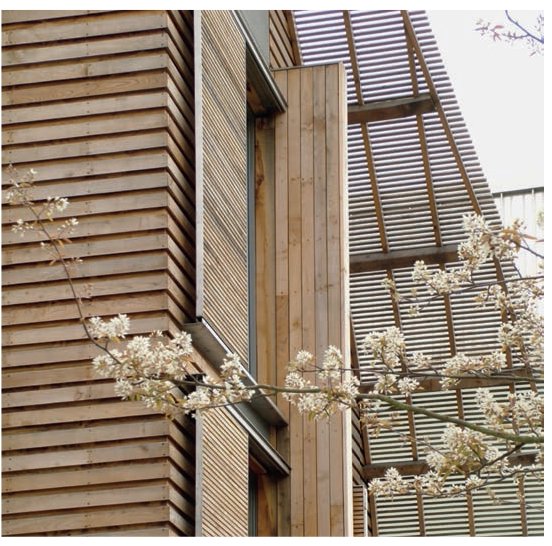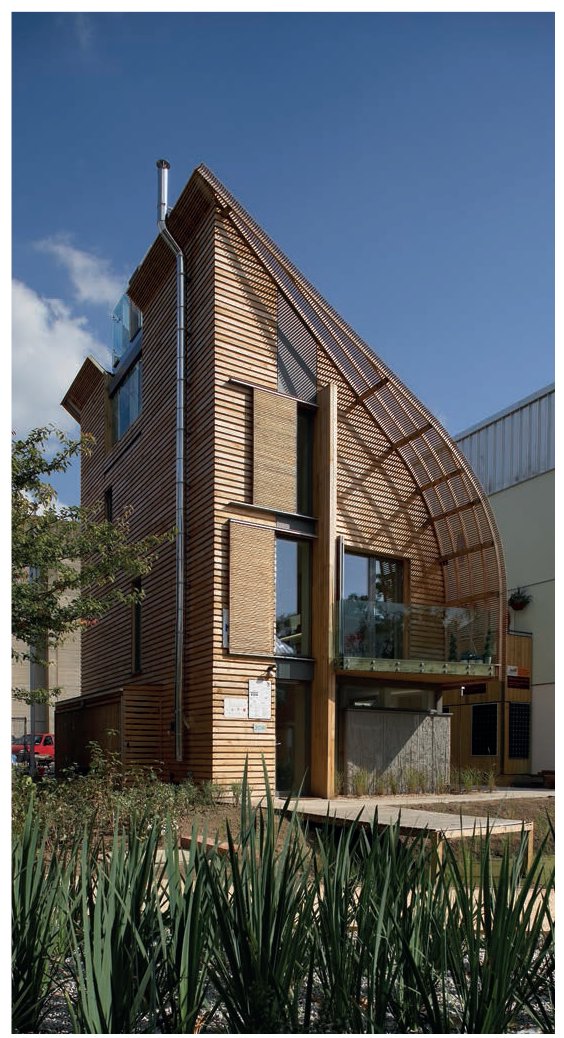Net-zero dwellings reduce energy consumption and hold the potential to find equilibrium in power usage and generation by decreasing reliance on the electric grid. These houses divert the generation of power away from polluting, conventional power plants and into local, more sustainable and cleaner methods. Although there are many definitions of a net-zero home, it can be defined as a house that produces and returns as much energy to the grid as it uses.
An important factor to consider when designing a net-zero building is the method used to heat and cool the structure. Since typical mechanical systems account for around 55 per cent of the overall energy consumption, net-zero housing can only be successful if its heating and cooling systems take advantage of natural sources (Baumann 2009). Factors such as insulation, waste-water heat recovery, window type and quality, natural ventilation, building envelope, green roofs and thermal storage areas contribute to the performance of a dwelling as much as, if not more, than the heating and air-conditioning systems themselves.
Another principle of net-zero dwellings is their energy production method. For a house to qualify for net-zero status, it must produce as much energy as it uses. It is important to decide whether the dwelling will be off-grid – using batteries to store energy for low production times – or grid-tied – in which case the dwelling can draw from and give back to the local power grid. This decision will affect the type of system chosen and therefore the cost, but whether the homes are off-grid or grid-tied, to qualify as net-zero they cannot emit any carbon dioxide (Tanha 2010). Although this immediately rules out the use of fossil fuel furnaces, there are still many applicable systems, such as photovoltaic panels and wind turbines, to choose from. Furthermore, it is best to combine these electricity production methods with other heat-production methods such as geothermal pumps and solar hot water vacuum tubes. While such heat-production systems do not actually produce electricity, they are valuable in reducing the amount required to heat the dwelling, making electrical production more effective.
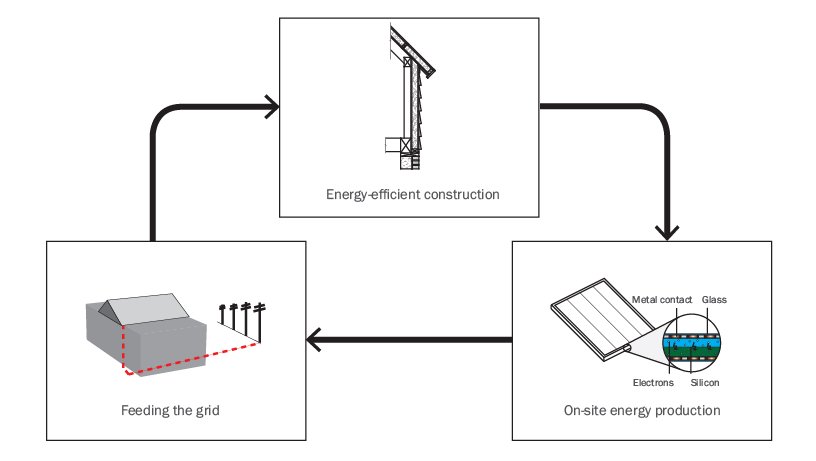
Figure 11.1: The three principles of Net-Zero building are: energy efficiency, power generation and the feeding of power back to the grid.
Another principle of net-zero dwellings that decreases their energy consumption is their size and orientation. Aspects such as the building’s dimensions and site orientation are critical to taking effective advantage of passive solar gain, natural daylight and indoor airflow. There are also much larger decisions that both designers and clients must consider before even purchasing a site, such as the local wind patterns, sun orientation, topography, the ground depth of winter frost and shadows cast by other buildings and trees. Finally, there are many digital devices that can help both the construction of net-zero dwellings, and their maintenance. Such technologies range from sun, wind and heat capacity calculating software to smart thermostats and energy usage readers.
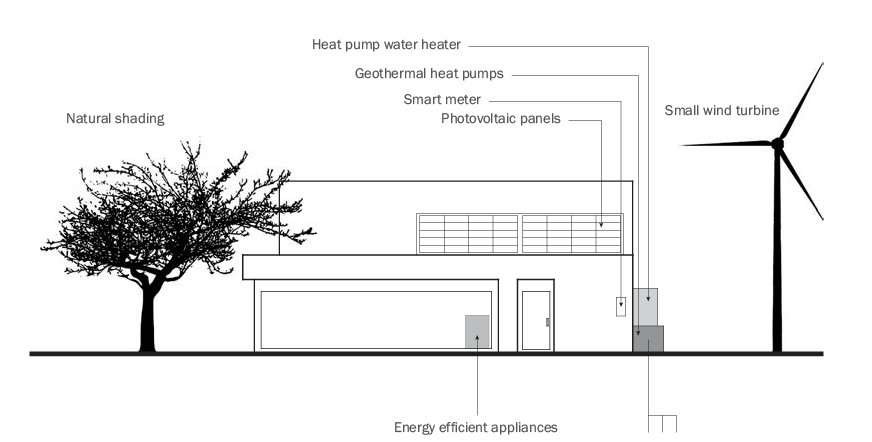
Figure 11.2: Alternative means of energy production in a net-zero building.
A net-zero house must be well insulated to reduce air leakage through the walls, floors and ceiling. There are several ways to do this. More traditional methods include the mixing of commonly used insulators such as the combination of opencell spray foam and cellulose insulation in the wall, floors and roof with rigid insulation on the exterior (Macht 2010). Some designers though, opt for innovative techniques such as thickwall, wrap-and-strap, double-wall and truss-wall. It is also possible to use cutting-edge thermal barrier materials; however, due to the increased expense of such innovative methods they should be reviewed to verify their cost-effectiveness before use (Tanha 2010). Regardless of whether a traditional mix or innovative approach is chosen, it is important that every net-zero dwelling is carefully sealed with a membrane to prevent air flowing through the walls. Since this is already commonplace among most current housing standards, it is relatively easy to obtain the appropriate specifications and guidelines.
When using a tightly insulated membrane, it is important to maintain airflow throughout the structure using suitable heating ventilation and air-conditioning (HVAC) methods or heat-recovery ventilation (HRV). These appliances recover the heat as it flows outside and transfer it into the new, fresh air that is entering the building. This is a very efficient method to reduce wasted energy though heat loss. Waste-water recovery systems perform the same functions for water and transfer heat from used water into potable water before it flows into the sewage system (Macht 2010).
The proper selection of windows and doors is another key factor in the energy management of a net-zero dwelling since they are critical to preventing unwanted heat loss or gain. One of the more widely used types of glass in net-zero buildings is krypton gas-filled low-emissivity glass, which is available in double- or triple-pane windows and doors. With such high thermal performance, these windows can be up to four times more efficient than traditional double-pane windows, but can have a large price tag (Macht 2010). Their usage should therefore be planned carefully for maximum efficiency. Another, more innovative, glass type is electrochromic or thermochromic glass. It contains glazing which can change from opaque to transparent instantly, and helps to control sunlight penetration and glare (Gonchar 2010).
Natural ventilation is another way to use natural cycles of hot and cold air to create airflow in a dwelling, and therefore reduce the use of air conditioning during summer months. This operates on the principle that hot air is less dense than cold air and therefore rises while cold air sinks. Designing a house to have windows near the ground and others near the top of a room is vital to taking advantage of this cycle (Tanha 2010). It is also important to design a structure with high ceilings, which encourages airflow throughout the dwelling (Haran 2009).
This air cycle can also be extended to the building envelope. Since the ‘skin’ is exposed to more solar energy than any other part of the building, it can be a great asset to gaining free energy. Current innovative techniques for such purposes include those that allow cold, sinking air to enter and be trapped in a thin layer between a steel mesh and the building wall. Here, the air is subjected to heat from the sun and, as it heats up and rises, it is collected and pumped either into the house or into thermal storage areas from which it is drawn and used to regulate the temperature (Gonchar 2010).
Designers of net-zero housing use two types of thermal reservoirs: green roofs and basement crawlspaces. Both methods rely on absorbing heat during the day, thereby keeping the house cooler, and releasing that heat at night to keep the dwelling warmer (City of Vancouver 2010). It is important to note that when a basement or crawlspace exists, heat storage only works on the first 10 cm (4 in) of any wall (Tanha 2010, Gonchar 2010).
The production of energy is also key to the design of net-zero homes, and the location of the building may very well prove to be the deciding factor on the form that energy production takes. When producing electricity with wind power, it is important to keep in mind that air density and average wind speed in an area can determine which turbine will be most effective (Tanha 2010). With solar power, it is important to review sun-path diagrams to determine the best location and angle at which to place photovoltaic cells for maximum solar intensity and duration.
For solar hot water production there are several models which should be reviewed, such as the flat-plate, the evacuated tube and the integral collector (Tanha 2010, City of Vancouver 2010).
One of the most effective ways to improve the performance of a net-zero home is through its orientation and footprint size. To benefit most from passive solar gain, the house should be orientated towards the sun and have overhanging shades on the windows that respect the sun angles as determined by sun-path charts.
New computing techniques are advantageous in net-zero dwellings for both the designer and homeowner. With recently developed software applications, architects can calculate not only wind and solar patterns, but also shadows and heat loss in different seasons. This new software can also be used to calculate the amount of heat retained by building materials and the appliances’ power consumption (Gonchar 2010). Other useful instruments include smart thermostats, which can be programmed to perform tasks, from heating less when homeowners are not in to closing the blinds on hot days (Tanha 2010). Finally, TED (The Energy Detective) is an appliance that can monitor electricity consumption and production and encourage energy saving (City of Vancouver 2010).
•High energy costs
•Need to reduce the home’s carbon footprint
•Technological advances in the field of energy
•Cost-efficient technology
INNOVATIONS
•Low-cost energy-producing technologies
•Proliferation of photovoltaic panels (PV)
•Digital monitoring devices
•Better insulation materials and techniques
11.1 NET-ZERO DWELLINGS |
|
Project |
Lighthouse |
Location |
Watford, England |
Architect |
Sheppard Robson |
The United Kingdom is one of the world’s leaders in environmental design and the use of corresponding technologies. Actions and targets were set by its government to create carbon-neutral developments. Designed by architecture firm Sheppard Robson, the Lighthouse project has been acknowledged as one of the first net-zero houses in the U.K.
Built in collaboration with the engineering firm ARUP, the Lighthouse includes not only sustainable technologies, but also design concepts that raise awareness of sustainability and foster behavioural changes among its occupants. The floor area is 93 m2 (1,001 sq ft), on two-and-a-half storeys. The living spaces and the kitchen, which are mostly used during the day, were placed on the first floor to receive the maximum amount of daylight. The bedrooms are located on the ground floor, where they are exposed to minimal light due to their low use during the daytime.
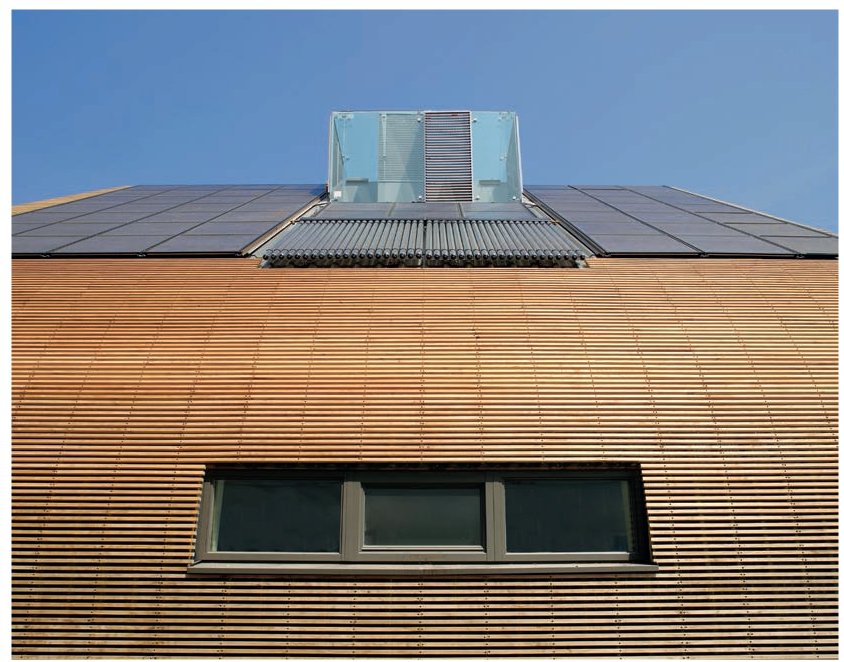
To limit heat loss, the walls of the Lighthouse were constructed with high performance insulated panels.
The living areas and the kitchen are top-lit by an opening, which is also used as a wind catcher and light funnel. By placing the stairs right below the wind catcher, the architect ensured that both natural light and ventilation reach the ground floor. The side windows take advantage of balconies and overhangs to reflect solar heat in the summer. To improve insulation, the house was conceived with a glazing ratio of 18 per cent in relation to the total wall area, as opposed to the 25 to 30 per cent in a conventional dwelling. Therefore, the triple-glazed windows are placed where the most-used spaces, such as the kitchen and living room, are located. To further limit heat loss, walls are constructed using highperformance insulated panels.
The facades are clad with wood to minimize the houses’ carbon footprint.
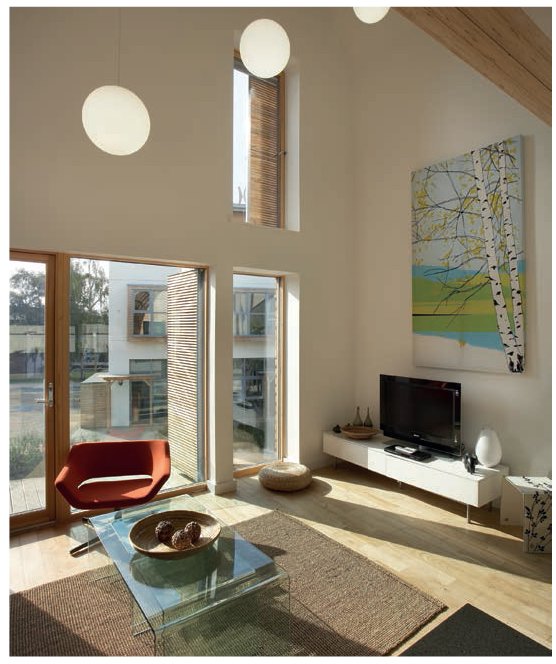
Smaller than usual patio doors were used to reduce heat loss.
A timber portal frame that carries the loads to the foundations supports the interior spaces. Without any excavation or the building of conventional slabs, the architect created a piled foundation for the house to sit on.
The 40-degree pitched roof is covered by photovoltaic (PV) panels for the generation of power. In addition, green technologies incorporated into the building include a biomass boiler, a rainwater collection system, water-efficient appliances and phase-changing materials that absorb heat during the day and release it at night.
The house design also includes an energy monitoring system to provide the occupants with a constant feedback on resource consumption, which helps them to remain aware of their environmental responsibility. With almost no impact on the local environment and utility resources, the architect sets a framework for the net-zero lifestyle for the occupants as well as for other designers.
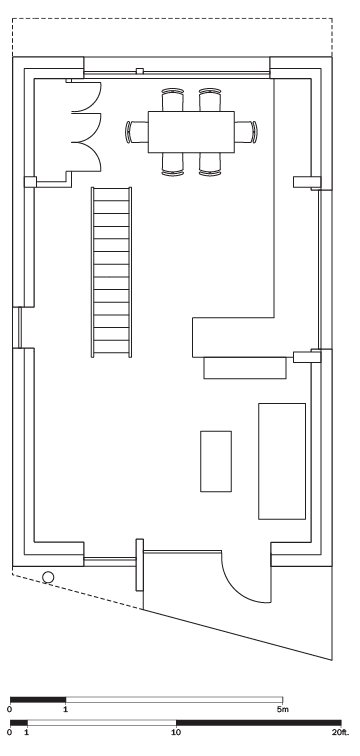
The ground floor open plan of the Lighthouse.
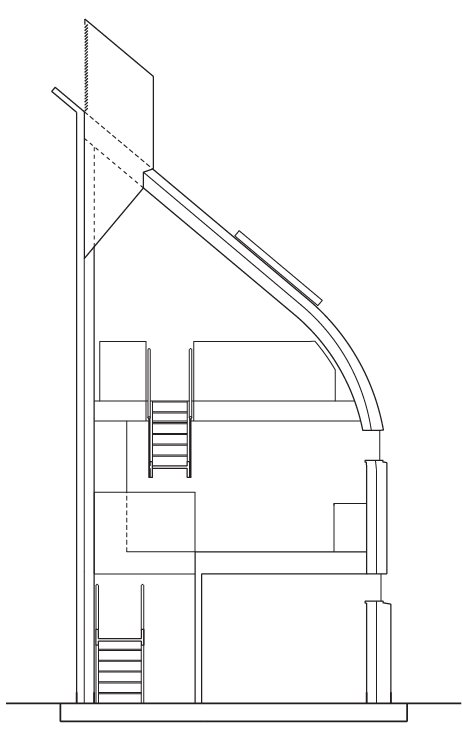
A timber portal frame that carries the load to the foundation supports the interior space.
The 40-degree pitched roof is covered with photovoltaic (PV) panels.
11.2 NET-ZERO DWELLINGS |
|
Project |
Sunlighthouse |
Location |
Pressroom, Austria |
Architect |
Hein-Troy Architects |
Austria lies in a cold, mountainous climate zone where westerly winds dominate. While low temperatures occur in the winter, infrastructures and buildings must constantly adapt to rapid weather change, which is affected by three different European weather systems. The region was intentionally selected by the Velux Corporation to host a housing competition to demonstrate sustainable design practices that balance energy and the environment. Hein–Troy’s winning entry, Sunlighthouse, which was completed in 2010, has been recognized as the first net-zero house in Austria.
The design takes advantage of the sunlight around the three-level home to achieve zero carbon emissions. The house is constructed from materials that were selected due to their low environmental impact and low embodied energy. Interior walls are elegantly finished with locally harvested pine and special cement called Slagstar, which produces 90 per cent less CO2 emissions than conventional Portland concrete, was also used.
During the warmer months, passive ventilation is induced by a ‘chimney effect’, whereby indoor air from the ground floor is carried to the other two levels through the house’s open stairways, and finally leaves the house from a rooftop opening.
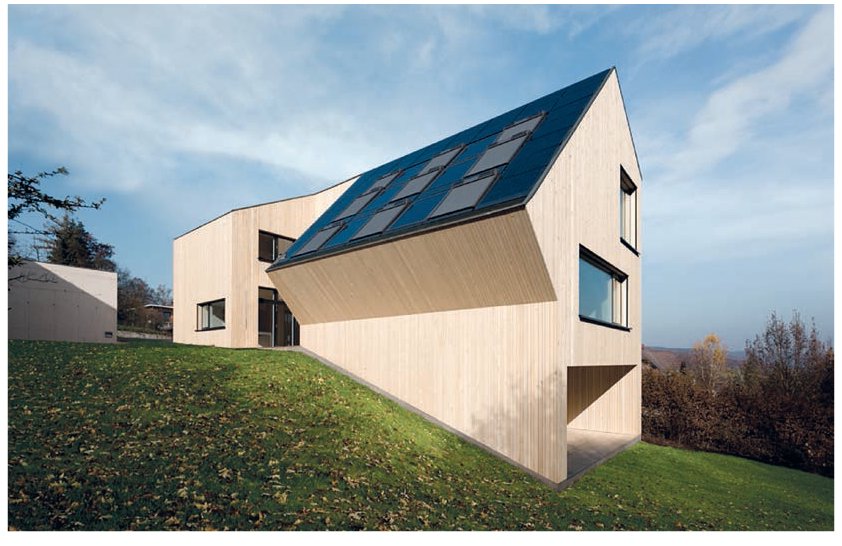
The Sunlighthouse was thefirst net-zero house in Austria.
The interior walls areňished with locally-harvested timber.
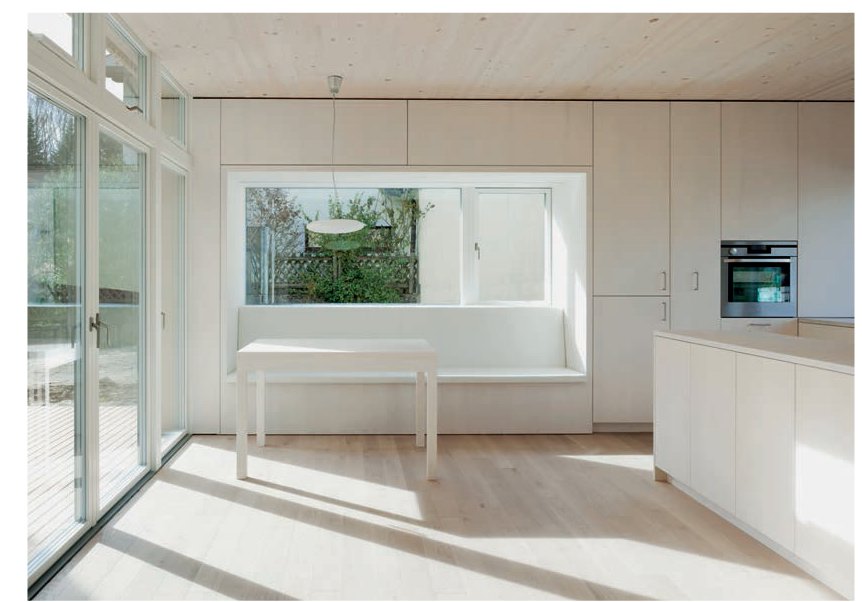
The materials for the dwelling have been chosen due to low embodied energy.
The large south-orientated, sloped roof maximizes the home’s solar exposure with three different integrated technologies: a grid of skylights designed with passive solar gain techniques, allowing a great amount of natural light and heat to enter the living spaces; rows of solar thermal collectors that are used for water heating, connected to the water storage tank; and finally, a total area of 48 m2 (517 sq ft) of photovoltaic panels, which have the potential to provide one third of the electricity needed by the occupants. In addition to the reduced electrical consumption, the walls are insulated with cellulose, a byproduct of recycled paper.
Within 30 years of its completion, the house is projected to generate enough energy to balance the CO2 emissions generated by its construction, including material productions, transportation and waste disposals.
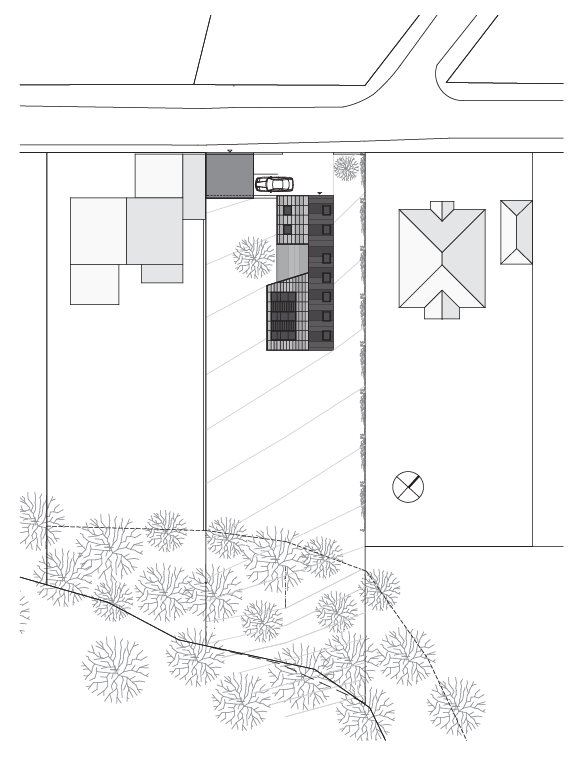
Solar water heaters are noticeable on the south-orientated sloped roof on this site plan.
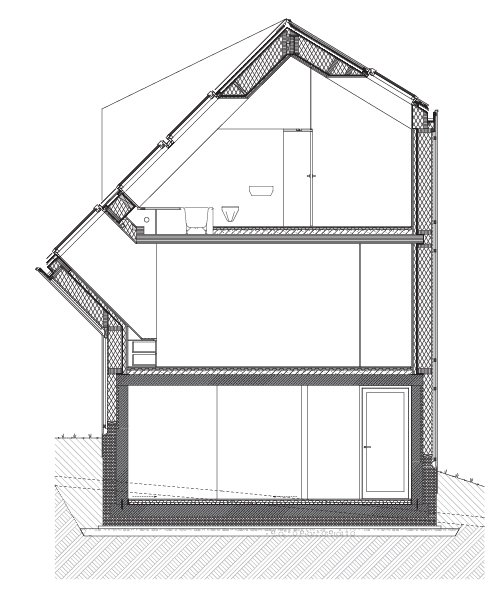
A section through the skylights.
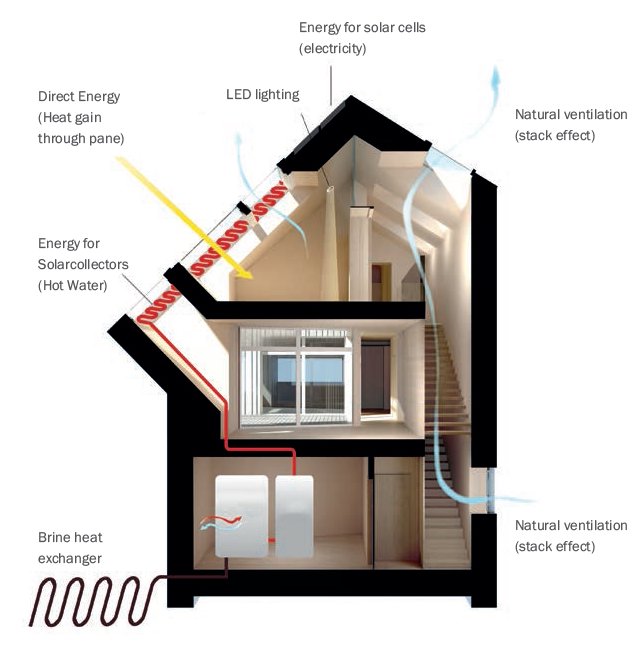
Energy- and ventilationenhancing features are shown in this cross-section.

